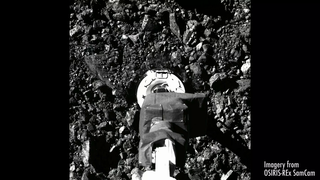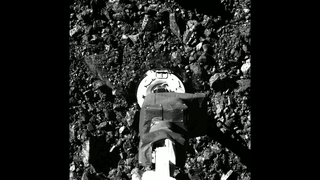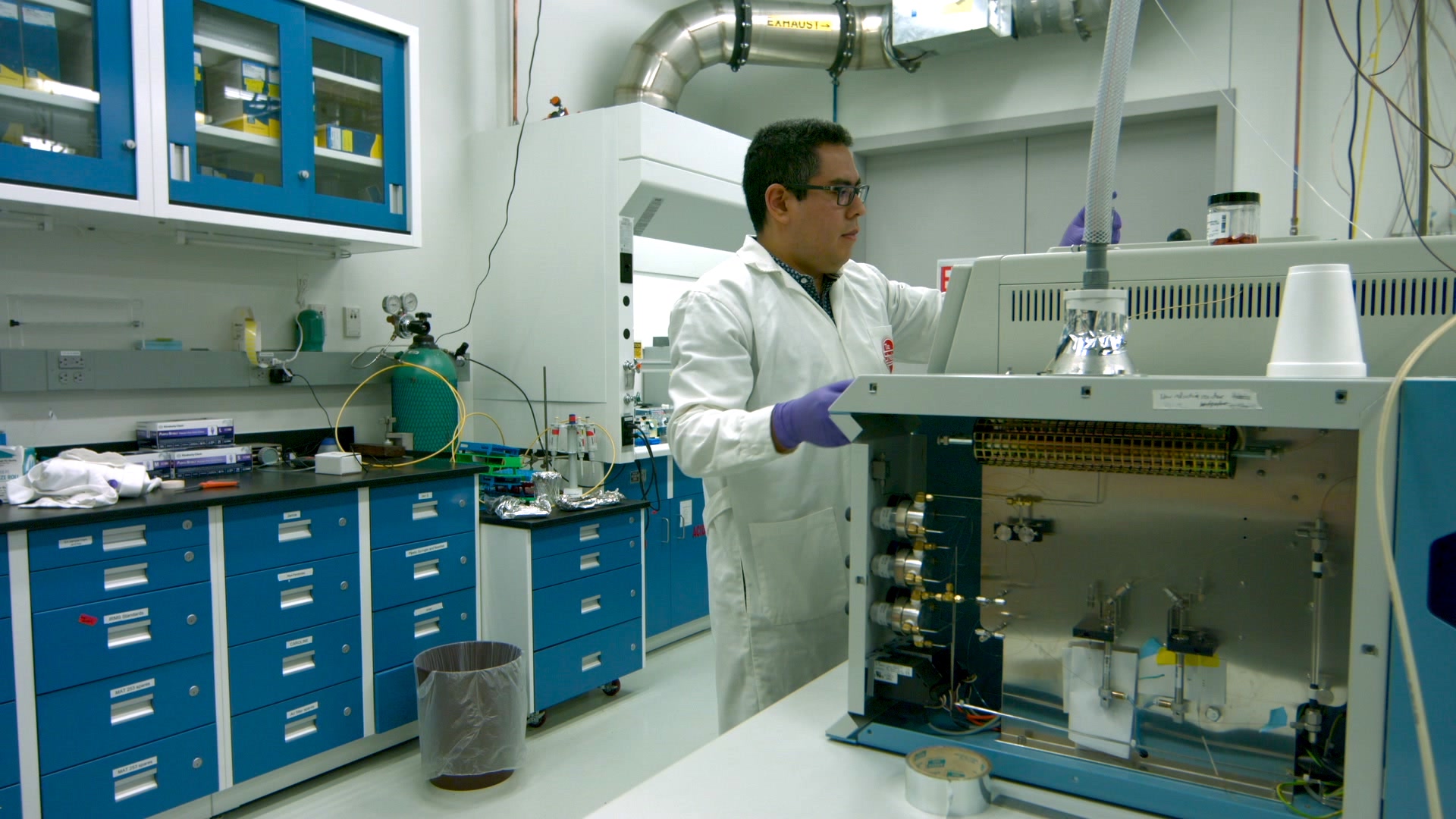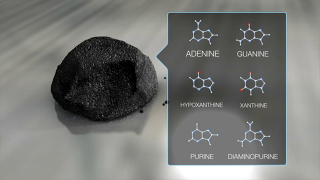Discoveries from Asteroid Bennu: Media Briefing Graphics
This highlight reel recaps the OSIRIS-REx mission, from assembly and launch of the spacecraft in 2016, to arrival at asteroid Bennu in 2018, TAG sample collection in 2020, the delivery of the sample to Earth in 2023, and curation of the Bennu samples in 2024.
Credit: NASA
Stream the media teleconference on NASA Video
Related video: NASA Finds Ingredients of Life
Read the press release on NASA.gov
Panelists:
Nicky Fox, associate administrator, NASA’s Science Mission Directorate at NASA Headquarters
Tim McCoy, curator of meteorites, Smithsonian’s National Museum of Natural History
Sara Russell, cosmic mineralogist, Natural History Museum, London
Danny Glavin, senior scientist for sample return, NASA’s Goddard Space Flight Center
Jason Dworkin, OSIRIS-REx project scientist, NASA’s Goddard Space Flight Center

Researchers identified salt minerals in the Bennu samples that were deposited as a result of brine evaporation from the asteroid’s parent body. In particular, they found a number of sodium salts, such as the needles of hydrated sodium carbonate highlighted in purple in this false-colored image – salts that could easily have been compromised if the samples had been exposed to water in Earth’s atmosphere.
Credit: Rob Wardell/Tim McCoy/Smithsonian Institution; colorization: Heather Roper/University of Arizona

Researchers identified salt minerals in the Bennu samples that were deposited as a result of brine evaporation from the asteroid’s parent body. In particular, they found a number of sodium salts, such as needles of hydrated sodium carbonate – salts that could easily have been compromised if the samples had been exposed to water in Earth’s atmosphere.
Credit: Rob Wardell/Tim McCoy/Smithsonian Institution

Dramatic plumes, both large and small, spray water ice and vapor from many locations along the famed "tiger stripes" near the south pole of Saturn's moon Enceladus. This two-image mosaic is one of the highest resolution views acquired by NASA’s Cassini mission during its imaging survey of the geyser basin capping the southern hemisphere of Enceladus.
Credit: NASA/JPL/Space Science Institute
This series of images taken by the OSIRIS-REx spacecraft shows Bennu in one full rotation from a distance of around 50 miles (80 km). The spacecraft’s PolyCam camera obtained the thirty-six 2.2-millisecond frames over a period of four hours and 18 minutes.
Credit: NASA/Goddard/University of Arizona

This image is an energy dispersive spectrometry map of an unprepared grain of asteroid Bennu. Phosphorous is shown in green, calcium in red, iron in yellow and magnesium in blue. Researchers identified a 0.1mm vein of magnesium sodium phosphate (green cluster at center) formed by evaporation. They hypothesize that the phosphate may have played a role in the formation of organic molecules found within the samples.
Credit: Natural History Museum, London/Tobias Salge

A hot water extract from an asteroid Bennu sample (left, “Bennu tea”) was found to contain a surprising abundance of ammonia, indicating that the material likely formed in a cold region of the solar system beyond Jupiter’s orbit.
Credit: NASA Goddard/OSIRIS-REx

Many amino acids come in two mirror image versions, dubbed “left” and “right.” Life on Earth builds proteins almost exclusively from left-handed amino acids, but in the Bennu samples, left and right-handed amino acids exist in equal abundance.
Credit: NASA Goddard/OSIRIS-REx
Researchers at NASA’s Goddard Space Flight Center received their first sample of asteroid Bennu on November 8, 2023. This editor’s resource reel shows the sample arriving at Goddard’s Astrobiology Analytical Laboratory. It also includes imagery of the sample being collected by the OSIRIS-REx spacecraft.
Credit: NASA Goddard/OSIRIS-REx
Researchers at NASA’s Goddard Space Flight Center received a second sample of asteroid Bennu, totaling five grams of pristine material, on July 19, 2024. In this reel, the sample is prepared for hot water extract, or “Bennu tea,” at Goddard’s Astrobiology Analytical Laboratory.
Credit: NASA Goddard/OSIRIS-REx
Credit: Scott Eckley/NASA JSC

Credit: NASA Goddard/OSIRIS-REx/Dan Gallagher

Credit: NASA/Erika Blumenfeld & Joseph Aebersold

Credit: NASA Goddard/OSIRIS-REx

Credit: NASA Goddard/OSIRIS-REx

Credit: NASA Goddard/OSIRIS-REx
For More Information
Credits
NASA's Goddard Space Flight Center
-
Scientists
- Nicola Fox (NASA)
- Timothy McCoy (Smithsonian Institution)
- Sara Russell (Natural History Museum, London)
- Daniel Glavin (NASA/GSFC)
- Jason Dworkin (NASA/GSFC)
-
Public affairs
- Rani Gran (NASA/GSFC)
-
Producer
- Dan Gallagher (eMITS)
-
Data visualizer
- Scott Eckley (Jacobs-JETS)
-
Support
- Rachel Barry (Barrios Technology Ltd)
- Lonnie Shekhtman (ADNET Systems, Inc.)
Release date
This page was originally published on Wednesday, January 29, 2025.
This page was last updated on Wednesday, January 29, 2025 at 10:26 AM EST.

![Scientists studying the Bennu samples have discovered evidence of a wet, salty environment from 4.5 billion years ago that created the molecular building blocks of life.Complete transcript available.Universal Production Music: “Future Tense” by Gresby Race Nash [PRS]; “Take Off” by Nicholas Smith [PRS]; “Big Decision” by Gresby Race Nash [PRS]; “Waiting for the Answer” by Gresby Race Nash [PRS]Watch this video on the NASA Goddard YouTube channel.](/vis/a010000/a014700/a014774/14774-Bennu-Organics-Thumbnail-V4.jpg)
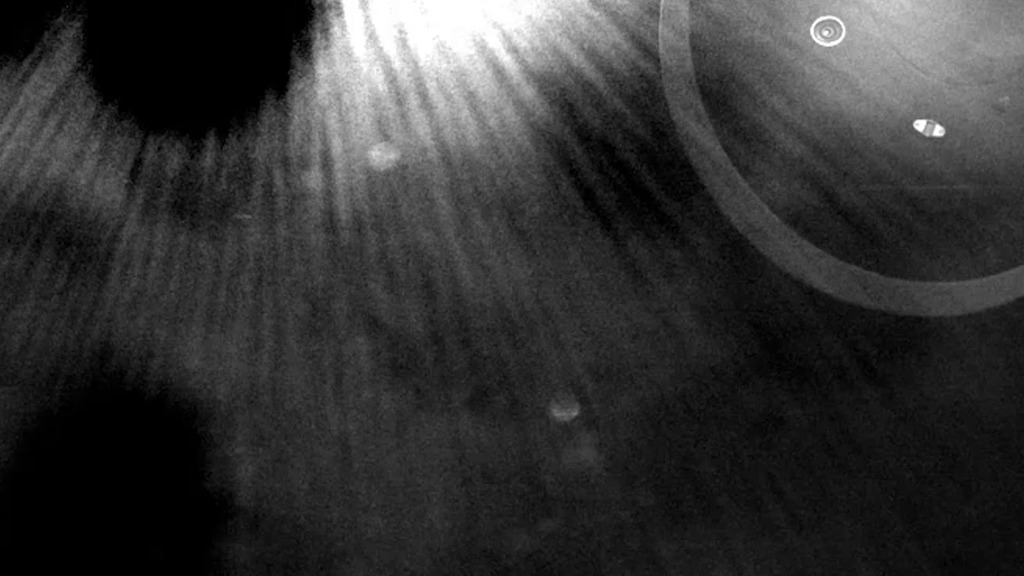

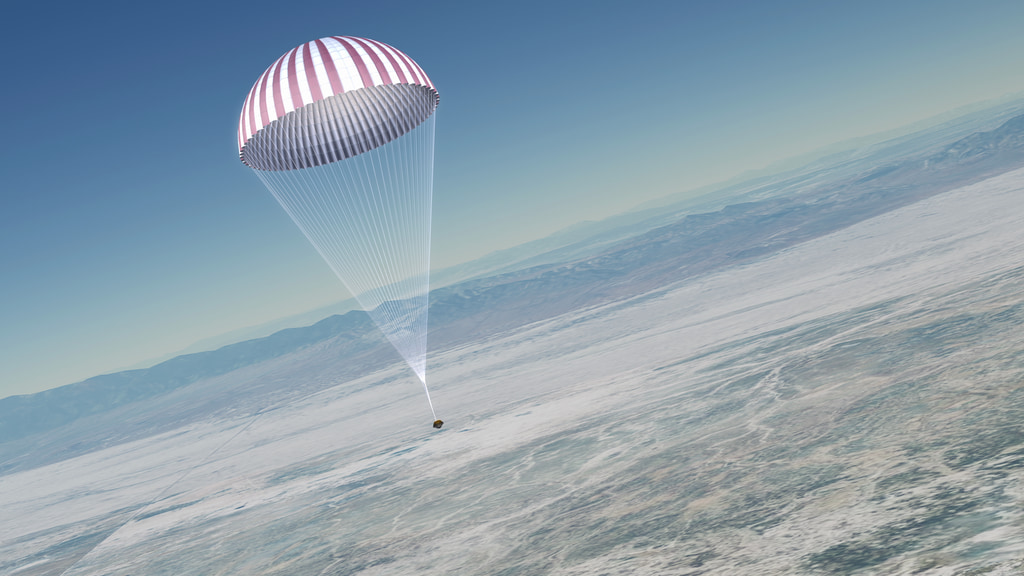

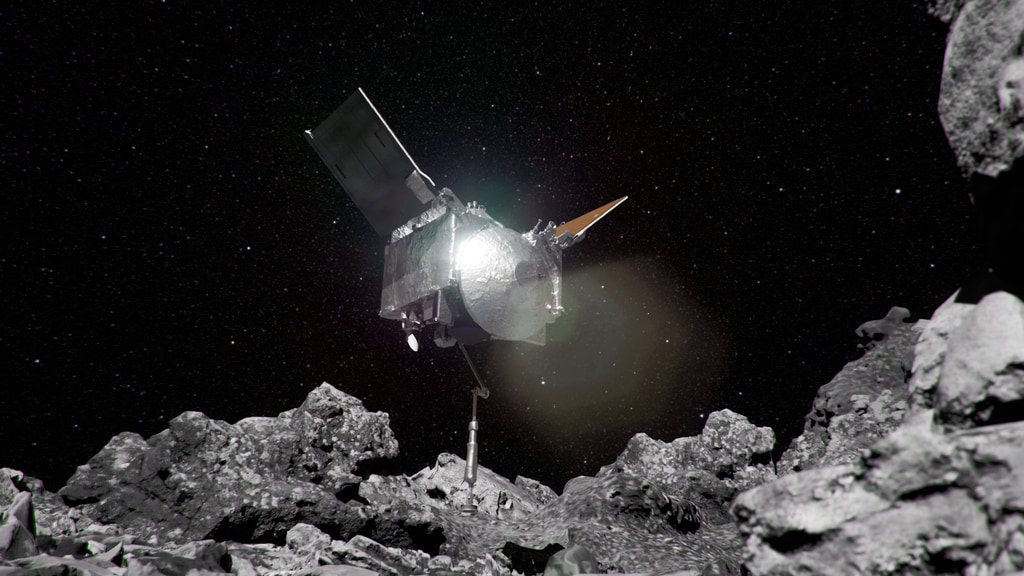
![PermafrostMusic Provided by Universal Production Music: “Tag You're It” by David Korkis [ASCAP]Complete transcript available.](/vis/a010000/a014100/a014142/GoddardGlossary-Permafrost_print.jpg)
